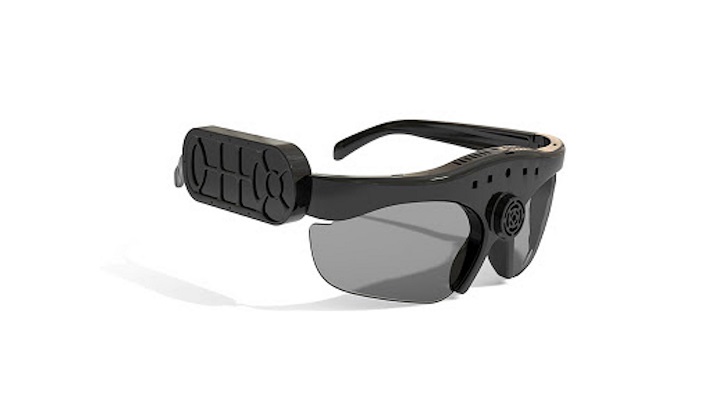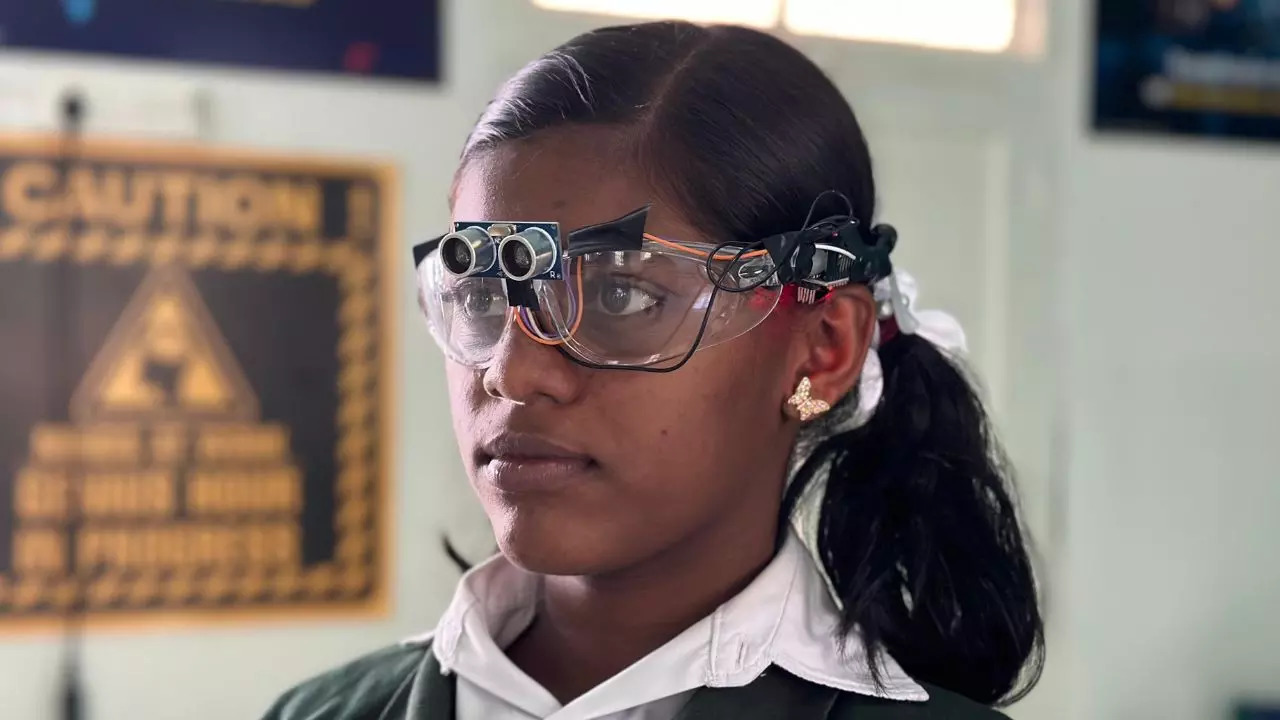Innovative Solutions in Assistive Modern Technology for Visual Problems
The landscape of assistive technology for visual problems is advancing swiftly, providing a range of innovative options that enhance ease of access and self-reliance. From innovative mobile phone applications that facilitate navigating to wearable tools developed for real-time guidance, these tools are improving the experiences of those with visual disabilities. The combination of smart home modern technologies and educational sources has the prospective to cultivate better neighborhood engagement. The ramifications of these developments raise important concerns concerning their availability and effectiveness in varied contexts, warranting a more detailed assessment of their broader effect.
Improvements in Smart Device Applications
In the last few years, advancements in smart device applications have actually considerably changed the landscape of assistive technology for individuals with visual disabilities. These applications leverage the powerful sensors and abilities of modern-day smartphones to offer individuals with devices that boost self-reliance and availability in their day-to-days live.
Notable among these developments are applications created for things acknowledgment, which utilize the mobile phone's cam to recognize things and give verbal descriptions. Such features empower individuals to browse their settings better, whether identifying products in shops or situating individual belongings at home. Additionally, text-to-speech applications have improved substantially, making it possible for customers to record published text through their device's camera and obtain split second sound comments, consequently assisting in reading and comprehension.
Community-driven applications have cultivated social communication and resource sharing among people with visual impairments, developing a supportive network that boosts their quality of life. Generally, smartphone applications have actually come to be crucial allies in advertising autonomy and availability for people with visual disabilities.
Wearable Devices for Navigation
Wearable gadgets for navigation have actually emerged as a groundbreaking service for people with aesthetic impairments, using hands-free assistance that enhances wheelchair and orientation. These gadgets commonly utilize sophisticated modern technologies, including GPS, ultrasonic sensors, and expert system, to give real-time feedback and direction to individuals as they browse their setting.
One noteworthy instance of wearable navigation modern technology is clever glasses, which can find obstacles and relay auditory or haptic responses to the user, enabling risk-free and effective activity in various setups. Other tools, such as belts and vests outfitted with sensors, can likewise educate customers of their surroundings by giving signals regarding neighboring objects or changes in terrain.
Additionally, lots of wearable tools integrate with smartphone applications, enabling customers to tailor their navigation preferences and obtain tailored route ideas. This personalization can significantly improve the individual experience, empowering people to travel with better self-confidence and self-reliance.
As technology remains to establish, the potential for wearable navigating devices to enhance the quality of life for individuals with visual impairments remains significant, leading the way for even more inclusive and easily accessible atmospheres.
Smart Home Modern Technology Combination

Moreover, clever appliances equipped with responsive interfaces or acoustic comments supply instinctive communications that provide especially to the demands of those with aesthetic disabilities. For example, smart refrigerators can reveal their contents and expiry days, while clever stoves can assist customers with the cooking procedure with audio guidelines.
Home automation systems, such as smart doorbells and security cameras, use satisfaction by permitting individuals to optical doctor obtain informs and gain access to live feeds through their mobile gadgets, improving individual security (AI-powered visual aids). In addition, combination with tablets and smartphones makes sure that individuals can handle their home environment from anywhere within their facilities
As wise home innovation remains to evolve, it holds the possible to transform the living experiences of people with aesthetic impairments, cultivating self-reliance and enhancing lifestyle in an increasingly connected world.

Educational Tools and Resources
Access to reliable instructional tools and resources is vital for individuals with visual impairments, as it equips them to engage completely in their learning experiences. Different assistive technologies have actually been created to enhance availability and foster independent understanding. Screen viewers, for circumstances, transform text into speech, allowing trainees to access digital web content effortlessly. AI-powered visual aids. Furthermore, refreshable braille display screens provide responsive feedback, making it less complicated for students to interact with composed product.
Additionally, instructional software specifically developed for visually impaired customers uses features such as high-contrast modes and adjustable message dimensions. These devices accommodate diverse knowing styles and make certain that trainees can customize their academic experience to their requirements.
Moreover, accessibility to audio publications and virtual libraries increases the variety of readily available understanding products, allowing trainees to check out topics comprehensive without the constraints enforced by standard print resources. Joint systems that include availability features additionally promote team tasks, making sure that aesthetically impaired trainees can add meaningfully along with their peers.
Area Support and Engagement
A durable network of area assistance and engagement is necessary for people with aesthetic disabilities, promoting a comprehensive setting where you can find out more they can flourish. Neighborhood companies, regional campaigning for teams, and volunteers play a pivotal duty in providing resources, details, and companionship, which are crucial for boosting the lifestyle for those influenced by aesthetic impairments.
Engagement tasks such as workshops, get-togethers, and assistance teams not just promote skill advancement yet likewise advertise social interaction, lowering feelings of isolation. These initiatives urge individuals to share experiences, obstacles, and successes, therefore enhancing community bonds. Furthermore, partnerships with regional companies can lead to higher accessibility in public spaces, even more incorporating individuals with aesthetic disabilities right into the area.
Innovation also enhances community involvement via online systems that use virtual support groups and sources, allowing individuals to connect despite geographical obstacles. By utilizing both electronic and in-person services, areas can create a comprehensive assistance network. Eventually, cultivating cooperation among different stakeholders-- consisting of families, instructors, and medical care professionals-- makes certain that individuals with visual problems receive the holistic assistance needed to browse everyday life successfully and with dignity.
Final Thought
Innovative options in assistive innovation for aesthetic impairment considerably improve the top quality of life for individuals opthalmologist facing these obstacles. The assimilation of smart device applications, wearable tools, clever home technology, and academic tools fosters better freedom and ease of access. Moreover, neighborhood assistance and involvement more empower aesthetically damaged individuals, promoting inclusivity and engagement in numerous elements of life. Collectively, these innovations not only change everyday experiences yet likewise lead the way for an extra equitable society.
The landscape of assistive technology for aesthetic impairment is progressing quickly, providing an array of ingenious options that enhance ease of access and freedom. Community-driven applications have promoted social interaction and resource sharing among people with aesthetic impairments, creating an encouraging network that improves their high quality of life. Overall, smartphone applications have become indispensable allies in advertising freedom and availability for people with aesthetic disabilities.
Lots of people with visual impairments are finding better freedom through the assimilation of wise home innovation.Cutting-edge options in assistive innovation for visual impairment dramatically boost the quality of life for individuals encountering these difficulties.